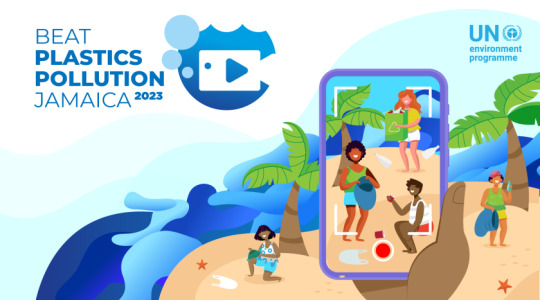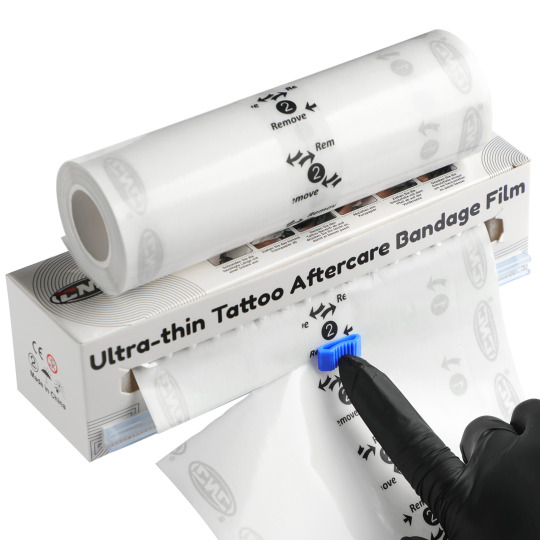#activity1
Text
UNEP: Zero Waste in the Caribbean: New ways, new waves
https://www.unep.org/zero-waste-caribbean-new-ways-new-waves
As leaders of the future, young people have a major part to play in beating plastic pollution, especially when we know that the age group between 15 and 24 years totals more than 20% of the entire Caribbean population. Youth engagement biodiversity preservation and plastic removal is also crucial since this can contribute to innovative environmental solutions that can nurture societal change in the fight against plastic pollution. Beat Plastic Pollution JA is the UN Jamaica joint project (UNEP, CEP, UNESCO, UNICEF, UN-WOMEN, FAO) in collaboration with “Zero Waste in the Caribbean: New Ways, New Waves” initiative based in Kingston which is intended to highlight student-led plastic pollution initiatives across Jamaica through the following activities:
Activity1: Schools in Kingston, Jamaica will be invited to produce short videos (30 seconds – 1 minute) creatively highlighting initiatives in schools/communities that actively address plastic pollution or projects they wish to see being implemented.
Activity 2: On the morning of World Environment Day - June 5, the United Nations Environment Programme will host a roundtable with youth participants on solutions to plastic pollution. The event will be an opportunity to commemorate World Environment Day 2023.
Activity 3: For the commemoration of Ocean Day 2023 – June 8, during the National Environmental Awareness Week (NEAW) there will be ocean awareness activities geared towards early childhood students that will take place at the Natural History Museum in Jamaica
Activity 4: In September, using the submitted pitch as a launch-pad, experts will share relevant scientific knowledge and encourage students to continue exploring topics related to plastic pollution and environmental protection while providing resources and insights to strengthen their projects. It will also be a unique opportunity for students to ask questions and share their perspectives and for partners to learn more about how young people experience these issues and their solutions to them.

About International Day of Zero Waste
The International Day of Zero Waste aims to promote sustainable consumption and production patterns, support the societal shift towards circularity and raise awareness about how zero-waste initiatives contribute to the advancement of the 2030 Agenda for Sustainable Development.
The waste sector contributes significantly to the triple planetary crisis of climate change, biodiversity and nature loss, and pollution. Humanity generates an estimated 2.24 billion tons of municipal solid waste annually, of which only 55 per cent is managed in controlled facilities. Every year, around 931 million tons of food is lost or wasted and up to 14 million tons of plastic waste enters aquatic ecosystems.
Zero-waste initiatives can foster sound waste management and minimize and prevent waste, helping to address the triple planetary crisis, protect the environment, enhance food security and improve human health and well-being.
When: 30 March 2023
Where: Worldwide
More information: https://www.unep.org/events/un-day/international-day-zero-waste-2023
Revisit past events:
30 March 2023 - Online event
The Road to Circularity and Zero Waste: Global Agreement on Ending Plastic Pollution - Resolution UNEA 5/14
Link: https://www.unep.org/events/online-event/road-circularity-and-zero-waste-global-agreement-ending-plastic-pollution
18 - 20 April 2023 - Belize
Towards zero waste through new circular economy policies: Central America and Caribbean regional technical exchange
Link: https://www.unep.org/events/conference/towards-zero-waste-through-new-circular-economy-policies-central-america-and
3 notes
·
View notes
Text
Pls like and follow
Activity1 Quarter2

11 notes
·
View notes
Text
@cherryladaga #Activity1 #Module1Quarter2

12 notes
·
View notes
Text
Activity1 Blog
1 Application/System: Siemens MindSphere
The problem of handling massive volumes of industrial data produced by devices and systems in manufacturing settings is tackled by Siemens MindSphere. Through the provision of actionable insights from data, the platform presents chances to enhance overall efficiency, minimize downtime, and optimize operations.
Emerging Technologies Used:
Internet of Things (IoT): Collects data from connected devices and sensors across industrial equipment.
Cloud Computing: Provides scalable storage and computing power to process and analyze data.
Big Data Analytics: Analyzes large datasets to extract valuable insights and trends.
Artificial Intelligence (AI) and Machine Learning (ML): Predicts maintenance needs and optimizes processes through advanced algorithms.
How it Works:
Siemens MindSphere uses Internet of Things (IoT) connectivity to link to industrial devices and collect data from systems, equipment, and sensors. The cloud is subsequently used to store and process this data. MindSphere analyzes data using AI/ML algorithms and big data analytics to deliver real-time insights, predictive maintenance alerts, and optimization recommendations. With the use of a web-based dashboard, users may access these data and make well-informed decisions to lower expenses and increase operational efficiency.
References:
Siemens MindSphere Overview
MindSphere Documentation
2 Application/System: ABB Ability Smart Sensor
Problem Solved/Opportunities:
The ABB Ability Smart Sensor tackles the problem of unplanned equipment breakdowns and the exorbitant maintenance expenses linked to conventional maintenance methods. It provides chances to convert from reactive to predictive maintenance, increasing asset life and equipment reliability.
How it Works:
Industrial equipment is equipped with ABB Ability Smart Sensors, which are used to continuously monitor various factors such as temperature, noise level, and vibration. These sensors send this data wirelessly to the cloud, where big data analytics and artificial intelligence (AI) algorithms are used to store and analyze it. Through an intuitive interface, the system offers predictive maintenance notifications and real-time condition monitoring. This lowers downtime and maintenance costs by empowering maintenance teams to take preventative action prior to equipment failures.
References:
ABB Ability Smart Sensor Manual
ABB Ability Smart Sensor Overview
Blog by: John Rodel A. Miasagrande
1 note
·
View note
Text



😍😍😍😍CNC Tattoo Aftercare Bandage is under hot sales now!🎉🎉🎉
Activity1:
Half price for VIP!
Price:36.99€
VIP Price:19.99€ 🥳🥳
Activitiy2:
Enter Code to Get 20% discount
👉👉Code:38EXFS36
(Two discount programs can be used at the same time)
Attention❗❗❗❗
Activities Times:
⏱⏱VIP activity time: 4.18-5.7
⏱⏱Code activity time: 4.18-4.24
👉👉Check link :https://www.amazon.es/dp/B0CP93HJ8N?ref=myi_title_dp&th=1
#CNC #cncmachine #tattoolife #tattoomachine #tattooneedles #tattoocartridges#tattoolife #tattooworkers#giveaway #newlaunch#discounts#Amazon
0 notes
Text

Designing an artificial heart with electric nodes powered by energy generated from playing a game like Scrabble is a creative and futuristic concept. Here’s a conceptual guide to how such a system could theoretically work:
1. Artificial Heart Mechanism:
The artificial heart would be designed to mimic the natural heart’s pumping action using mechanical parts and electric nodes1.
It would have a built-in pacemaker system to regulate the heartbeat, powered by a battery or other energy sources1.
2. Energy Harvesting from Gameplay:
Sensors could be integrated into the Scrabble board to capture kinetic energy from tile movements and presses2.
This energy would be converted into electrical energy through piezoelectric materials or other energy-harvesting technologies3.
3. Energy Storage and Transfer:
The electrical energy generated during gameplay would be stored in a capacitor or a small battery within the Scrabble board.
Once the game is over, the stored energy could be transferred wirelessly or through a physical connection to the artificial heart’s energy reservoir.
4. Energy Reservoir:
The artificial heart would have an energy reservoir, possibly using advanced battery technology, to store the harvested energy4.
This reservoir would act as a backup power source for the heart’s electric nodes, supplementing or replacing the primary power source when needed.
5. Control System:
A microcontroller would manage the flow of energy from the Scrabble board to the heart, ensuring that the heart receives a steady supply of power.
The system would monitor the energy levels in the reservoir and regulate the charging process to prevent overcharging or energy wastage.
6. Safety Mechanisms:
The design would include fail-safes to prevent any potential harm from irregular power surges or electrical malfunctions.
Biocompatible materials and insulation would be used to ensure the safety of the patient.
7. Integration with Existing Medical Devices:
The system would be designed to be compatible with existing artificial heart models and medical device standards1.
It would undergo rigorous testing to meet healthcare regulations and ensure reliability and safety.
This concept combines biomedical engineering with gamification, creating a novel approach to powering medical devices. While the idea of using energy from playing games to power an artificial heart is imaginative, it would require significant advancements in energy harvesting, storage, and biomedical technology to become feasible. It’s a thought-provoking concept that highlights the potential for integrating everyday activities with medical technology to enhance patient care and device sustainability.
///
Certainly! Here’s a conceptual description of the components and connections for an artificial heart system powered by energy generated from playing games like Scrabble:
1. Artificial Heart Components:
Implantable Pulse Generator (IPG): The core unit containing the electronics and battery to generate electric currents needed to stimulate the myocardium1.
Leads: Wires that deliver the electric current from the IPG to the heart tissue. They are typically guided to the right atrial and ventricular myocardium via a vein1.
Electric Nodes: Specialized electrodes at the lead tips that contact the heart tissue to deliver electrical stimulation and sense the heart’s electrical activity1.
2. Energy Harvesting from Scrabble Gameplay:
Scrabble Board Sensors: Devices embedded in the Scrabble board to capture kinetic energy from tile movements.
Energy Conversion Mechanism: A system using piezoelectric materials or other technologies to convert kinetic energy into electrical energy.
3. Energy Storage and Transfer:
Energy Storage Unit: A capacitor or small battery within the Scrabble board to store the generated electrical energy.
Energy Transfer Interface: A method to transfer the stored energy to the artificial heart, which could be wireless or through a physical connection.
4. Artificial Heart Energy Reservoir:
Reservoir Battery: An advanced battery technology within the artificial heart to store the harvested energy as a backup power source2.
Control System: A microcontroller managing the flow of energy from the Scrabble board to the heart, ensuring a steady power supply.
5. Safety and Regulatory Compliance:
Safety Mechanisms: Fail-safes to prevent potential harm from power surges or electrical malfunctions.
Biocompatible Materials: Insulation and materials used in the artificial heart and leads to ensure patient safety.
6. Integration with Medical Devices:
Compatibility: Designing the system to be compatible with existing artificial heart models and medical device standards.
Testing and Approval: Undergoing rigorous testing to meet healthcare regulations for efficacy and safety.
In this conceptual system, the patient plays Scrabble, and the energy generated from the game is captured and converted into electrical energy. This energy is then stored and later transferred to the artificial heart’s energy reservoir. The heart uses this energy to supplement its power needs, ensuring the patient’s heart continues to function effectively. It’s a novel approach that would require significant advancements in energy harvesting and medical device technology to be realized. The integration of such a system would be complex, involving careful consideration of biocompatibility, energy efficiency, and patient safety.
0 notes
Text
worst thing about the curse is how it messes with the friendship levels. activity1 is on level 5 for the person I'm talking to while it's at level 34 for me. how do we progress :|
#literally hate it so much. if this wasn't a problem I wouldn't even mind the curse#but this. it kills me. This is the reason I'm lonely. I'm 100%. there's no other explanation that makes this much sense#making any kind of close friend is almost impossible in this condition 😭😭😭😭
0 notes
Text
Trekking Pole and Hiking vs. Trekking: Exploring the Differences and Benefits
Table of Contents1. Introduction2. Understanding Trekking Poles1. What Are Trekking Poles?2. Types of Trekking Poles3. Benefits of Using Trekking Poles3. Hiking: A Popular Outdoor Activity1. Definition of Hiking2. Hiking Essentials3. Benefits of Hiking4. Trekking: The Adventure on Foot1. What is Trekking?2. Preparing for Trekking3. Benefits of Trekking5. Trekking Pole vs. Hiking: A Comparative…

View On WordPress
0 notes
Text
Orality and Literacy not Orality vs. Literacy
In our current learning modality, I can’t imagine learning without texts to read. I have a short attention span, and I am more comfortable in writing or typing my lessons. My philosophy is, once something is put on paper, it is solidified and can be perceived visually, so one’s brain can grasp the information.
It does not automatically mean that I abhor speaking – in fact, I hold people who can comprehend information after hearing it once to a high regard. Plus, reading a book aloud counts as a demonstration of orality. My skill in oral communication is one of the things I aim to enhance during my stay in the university.
Human communication is different from media in such a way that media or the ‘medium’ is not quite the message. In Ong’s interpretation, human communication needs anticipated feedback to repeat its cycle and sustain itself. In models, the message flows from sender to receiver position. In human to human communication, a sender also expects to become the receiver and vice versa to complete the chain of exchanging messages (Ong, 1982). Basically, one cannot talk to themselves and call it true human communication. Furthermore, ‘media’ model of communication comprises printed or written texts, therefore, it exhibits chirographic conditioning.
In analyzing orality and literacy, it is more productive to scrutinize how the two coexist to uphold human interaction and consciousness for thousands of years, rather than to drive a wedge between the notions. Walter Ong in his book Orality and literacy: technologizing of the word raised important statements to supplement facts about the information, dissemination, consumption as well as critical perspectives on the role of orality in media and communication. He shed light to the similarities between oral and literate cultures – the use of mnemonics and formulas, concrete real-life examples, and somatics. Mnemonics and concrete examples help retain information in the brain, while somatics engages parts of the body while communicating (Ong, 1982, as cited in Jkendell, 2012). On the other side of the coin, oral and literate cultures differ because oral culture tends to be additive rather than subordinate, aggregative rather than analytic, redundant or ‘copious’, conservative or traditionalist, close to the human lifeworld, agonistically toned, Empathetic and participatory rather than objectively distanced, homeostatic, and situational rather than abstract (Ong, 1982, p.31).
For example, oral cultures lean towards redundancy because to preserve it and successfully pass it to the next generation, the old communicator must repeat the information through word of the mouth, and so on. It is also characterized by word baggage which is why oral cultures are aggregative rather than analytic.
Moving on to the brief history of orality, writing, and being human, in the past, people who identified themselves as ‘civilized’ or literate people held a prejudice against those who they deemed ‘primitive’ or those who didn’t identify with literacy. The term, along with ‘illiterate’ were offensive, and in the present, kinder and positive terms are associated with understanding the earlier states of consciousness (Ong, 1982).
Orality and literacy both propel our human experience and bridge our past and future. Thus, it is important to remain open to it and other critical perspectives of communication to understand society.
References
Blanche (2020). In their own words [Online Image]. Atlassian. https://www.atlassian.com/blog/inside-atlassian/how-to-navigate-diverse-communication-styles-at-work
Jkendell (2012). Orality and literacy – In what ways are oral and literate cultures similar? ETEC540: Text, Technologies – Community Weblog. https://blogs.ubc.ca/etec540sept12/
Ong, W. J. (1982). Orality and literacy : The technologizing of the word. ProQuest Ebook Central https://ebookcentral.proquest.com
Roy, B. (2021). Communication skills in the workplace [Online Image]. Vantage Circle. https://blog.vantagecircle.com/good-communication-skills-in-the-workplace/


4 notes
·
View notes
Text
What is Creative Non-fiction?
It has an extensive research which they give lots of search, questions, survey or even came from the author.
It came from the authors or the writers experience, actual scenarios, or personals information.
It makes the writers free to write their experiences and emotion and also let the writers feel what the authors have feel.
It gives the readers or the audience an idea and give them more information about the authors or writers life and information.
1 note
·
View note
Text
(Module 4) Activity 1

As I examined my selfies in this class, I came upon the realization that most of my selfies do not mirror who I truly was. I did those selfies to comply with the attendance check/requirement. So, I took those selfies with the knowledge that my Professors and my other classmates would see it and because of this I became conscious and because I was conscious I represented myself in a way that would make me look good and confident. In addition, to make my selfies more appealing/pleasing/attractive I rely on angles (I am not a fan of filters, so I rarely use them). Lastly, I do not consider my selfies as a fair representation of myself because pictures or photos can be easily manipulated. I mean, I can look good in a selfie if I want to with the use of filters, photo editors and the picture-perfect angle. I can fake a smile or a laugh even though deep-down inside I am a crying mess.
1 note
·
View note
